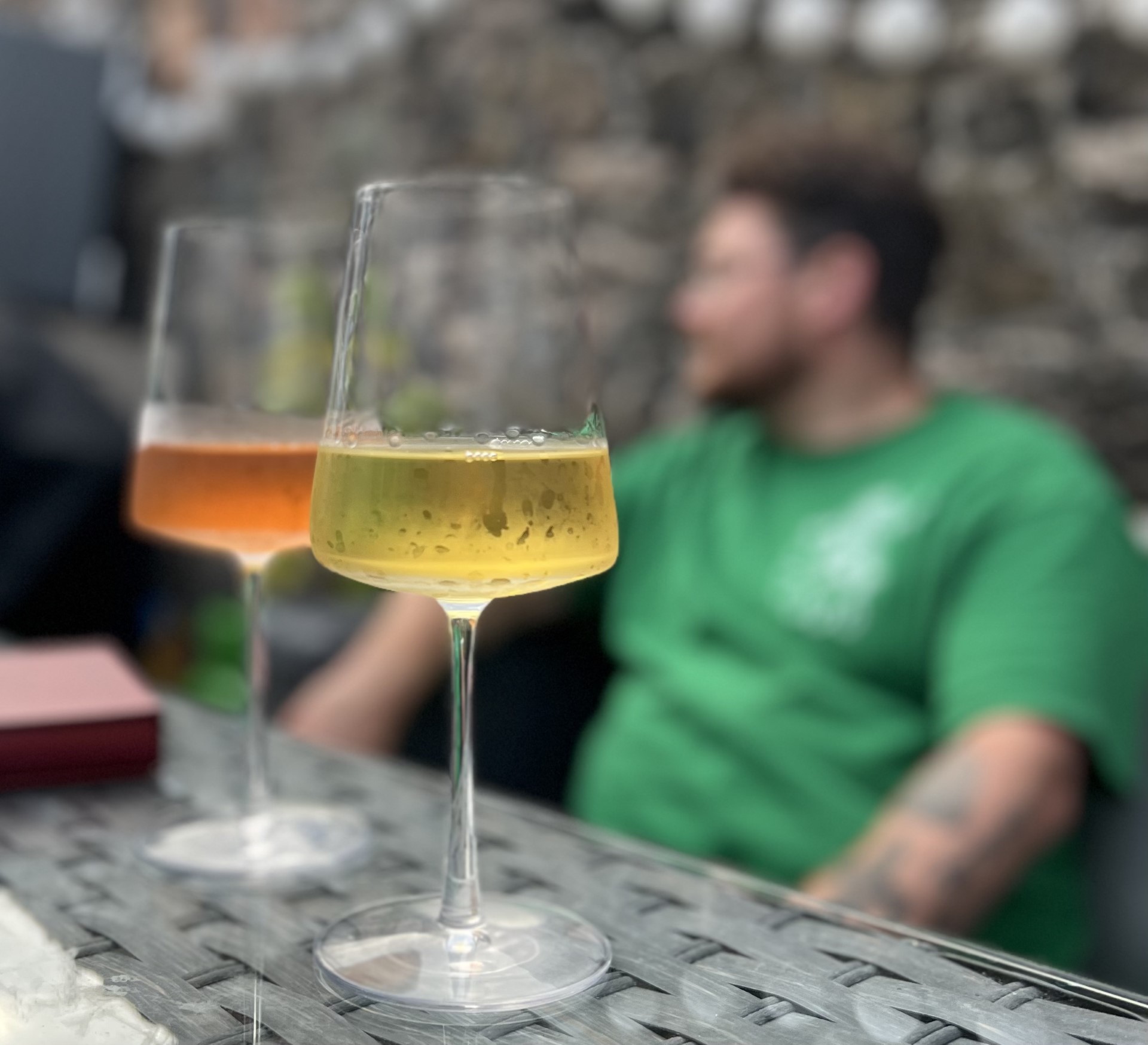Skin in the Game by Mike Dean
A huge welcome to our new guest writer, Mr Mike Dean aka @amazingmac.
A gentleman more accustomed to being behind the microphone, under the guise of We're Drunk & We Know Things @wdawkt, an award winning podcast with beer, movies & tech!
His recently developed love and passion for wine, in all shaped and sizes, led us to a great idea... would Mike want to guest as a front line member of the Love Wine creative branch, writing a blog from time to time?
The answer was a resounding, YES!
So here we have it.... we leave you with the talented Mr Dean, and;
Skin in the Game
“What is that?!” my co-worker asks, pointing to my wine glass. “It’s orange wine” I reply, prepared with my practiced and oft repeated follow up “No, it’s not made from oranges, its white wine made like red wine. Normally white grapes are pressed, the skins removed and the juice fermented. With orange wine the juice is left in contact with the skins for some amount of time, that gives it the colour.”
At this point I notice they’ve wandered off during my riveting explanation.
Such is the life of a wine nerd, but if you’re still reading, then allow me to explain a little further.
Skin contact is really just another term for maceration, and is a very old tradition originating from Georgia (the one next to Turkey, not the one Ray Charles sang about), where grapes were fermented spontaneously (no added yeast) in open clay pots, that were buried in the ground up to the neck, call Qveri. When macerating 'white' grapes the pots produced an amber colour wine, but the colour is only half the story.
The purpose of this contact isn’t just to impart some shocking colour (which will vary depending on the grape variety and length of maceration), but to add body, preserving the acidity of the wine whilst adding the tannic nature of red and giving the wine a more textured and fuller mouthfeel. From an aromatic perspective, the skin contact draws out floral, herbaceous and phenolic characters giving more depth, especially with longer maceration.
How far the tannic nature and texture develop depends on how long the wine is macerated on its skins, which means wine makers can use this technique to add depth and body to wine without having to go full Irn-Bru.
This proves a useful tool for wine makers, but also lends itself to mad-geniuses who want to push the term “wine” to its breaking point.
Example of colour variation. Left: Calcarius Falanghina. Right: Vanedda Catarratto / Grillo. |
|
|
Some of my favourites are below, starting with one from the subtler end, to two at the far out, “is this even wine?” “my guests are looking at me like a mad person” end (you get used to it, trust me). TIP – Due to the skin contact the last two wines have higher tannins than you’d expect, give them a try on opening, but for a mellower less tannic experience let them open up for an hour or two. I find the Calcarius is a different wine if you leave it to the next day in the fridge, and given it’s a litre bottle, often enjoy it over two nights. Below are three wines I reviewed recently with my tasting notes and maceration lengths for reference. There aren’t any rules, it’s your wine! Enjoy Mike |








Leave a comment